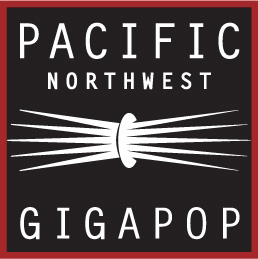Pacific Wave Announces Diverse 40G TransPacific Capacity to Australia and New Zealand
Upgrade to Major US West Coast Peering Exchange for Research and Education Enhances Worldwide Ultra-High-Performance Networked Collaboration
Pacific Wave today announced the completion of a second 40-Gigabit per second (Gb/s) connection from the US West Coast to Australia and New Zealand. Crossing the Pacific Ocean from Los Angeles through the Big Island of Hawaii and on to Australia, this ultra-high-performance network link complements an existing 40 Gb/s link from Seattle through Oahu to Australia.
Both links provide increased performance and robustness to the Pacific Wave distributed international peering exchange, which is the chief means by which the world's advanced research and education networks cross the Pacific Ocean and a crucial part of the global advanced networking infrastructure. In this capacity, Pacific Wave enables cutting-edge activity in all realms of data-intensive science, including cancer treatment, climate research, digital media, genomics, oceanography, seismography, software-defined networking, space science, and more.
A joint project between the Corporation for Education Network Initiatives in California (CENIC) and the Pacific Northwest Gigapop (PNWGP) with support from the University of Southern California and the University of Washington, Pacific Wave is a state-of-the-art international peering exchange designed to serve research and education networks throughout the Pacific Rim and beyond and features connection points at three US West Coast locations: the San Francisco Bay Area, Los Angeles, and Seattle.
"Global innovation, particularly in the data-intensive sciences where our most pressing modern challenges lie, is no longer possible without global networking," observes Louis Fox, President and CEO of CENIC. "Maintaining our shared advanced network infrastructure at the highest possible level is critical if we are to overcome the challenges we confront in climate change, medicine, and economics, to name but a few areas."
"Shared infrastructure improvements like this -- and others yet to come -- are probably among the most effective investments that society can make nowdays, given the positive impact they can create for global communities and for our planet," Fox added.
"It's important to note that upgrades like this are not an endpoint in themselves but a step toward the future," states PNWGP's Executive Director Amy Philipson. "Increased bandwidth invariably brings increased demand for bandwidth, which is why Pacific Wave's planned connectivity upgrades include 100 Gbps connectivity as well -- and I'm sure it won't end there." Adds Philipson, "It's also important to note that this will not only benefit innovation in Australia and New Zealand but around the world as well. Some of the most significant institutions and data-intensive scientific instrumentation in the world is located there, which means that researchers around the globe will also benefit from greatly improved connectivity to their colleagues two nations."
"This upgrade significantly improves global access to the unparalleled collection of international astronomical observatories in Hawaii," said University of Hawaii President David Lassner, who also serves as principal investigator for the NSF International Research Network Connections (IRNC) project that supported the US costs of the upgrade. "Current instruments already generate terabytes of data every 24 hours, and next generation projects like the Thirty Meter Telescope on Mauna Kea and NSF-supported Daniel K. Inouye Solar Telescope on Haleakala will challenge our international research networks even more. So it was critical that we built into this upgrade our plans to move to 100 Gbps in 2016."
This announcement also comes on the heels of an announcement by the Australian advanced network AARNet of their new partnership with New Zealand advanced network REANNZ and Southern Cross Cable Networks to provide New Zealand scientists and researchers with access to ultra high-speed international connectivity as well as the general Internet. The partnership means that New Zealand scientists and researchers will, for the first time, have capacity for big-data transport between New Zealand and the rest of the world.
"As long time participants in Pacific Wave, REANNZ has benefited greatly from the distributed multi-city and multi-network exchange model that provides convenient 'one-stop' high performance connectivity to the US scientific community," says Steve Cotter, CEO of REANNZ. "We look forward to continued collaboration as we plan to scale our networks to 100G and deploy emerging technologies like software defined networking."
"We're pleased to be contributing to the expansion of vital global research network infrastructure," adds AARNet CEO Chris Hancock. "Built in partnership with Southern Cross Cable Networks, this second high-speed AARNet link across the Pacific adds capacity, diversity and redundancy to our network, further bolstering our international connectivity to ensure Australia's, and New Zealand's, participation in major international scientific research collaborations."
More information including network maps and a full list of participants can be found at www.pacificwave.net.
* TransLight/Pacific Wave is funded by NSF Award No. 0962931.
